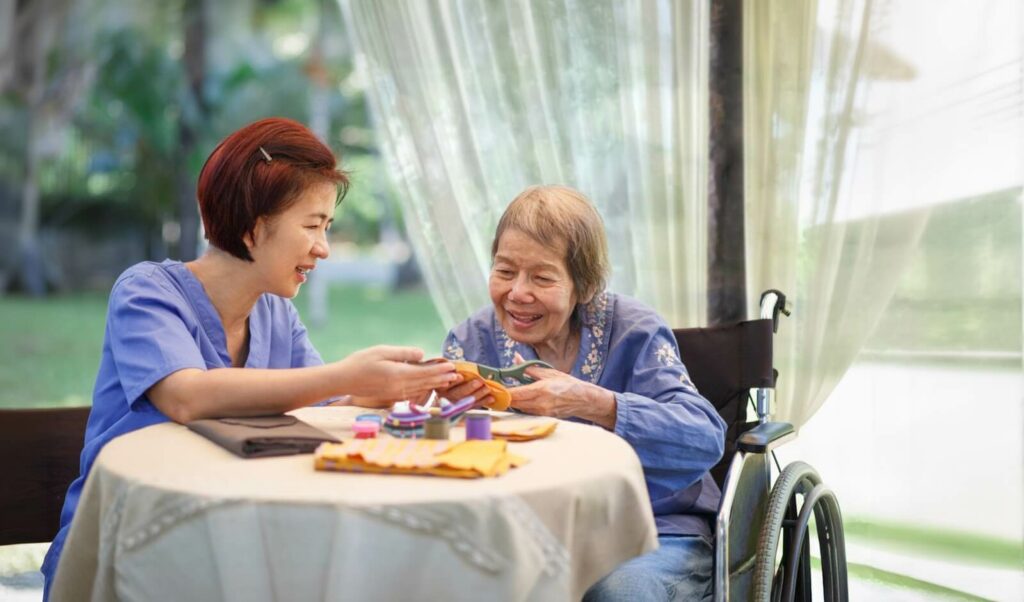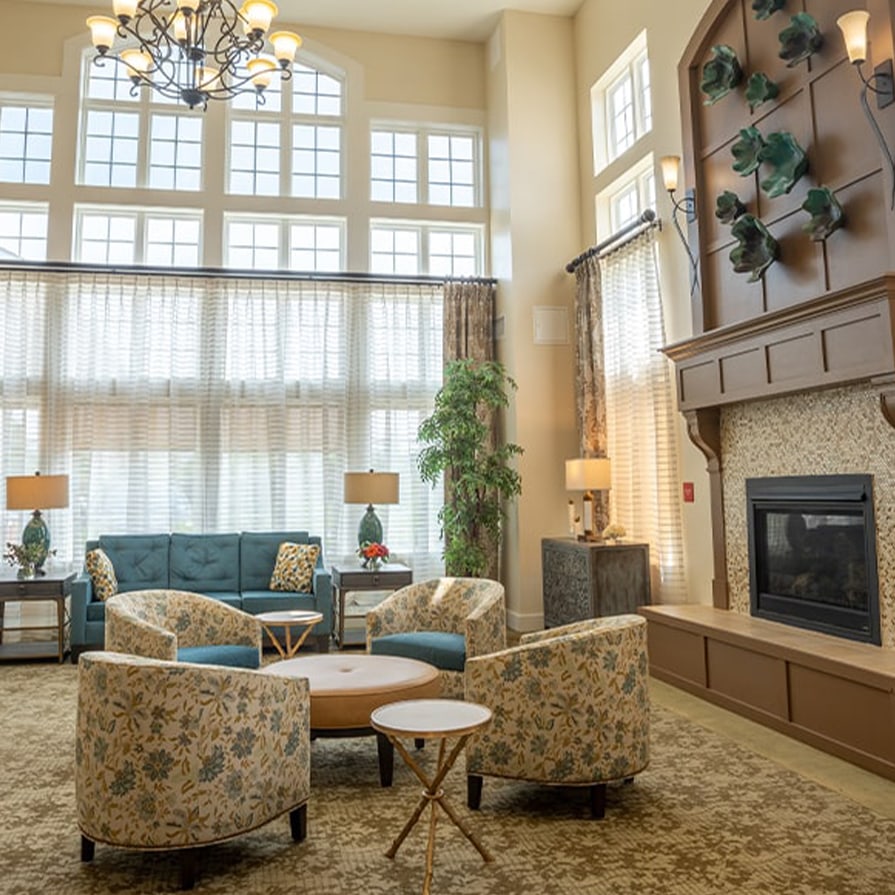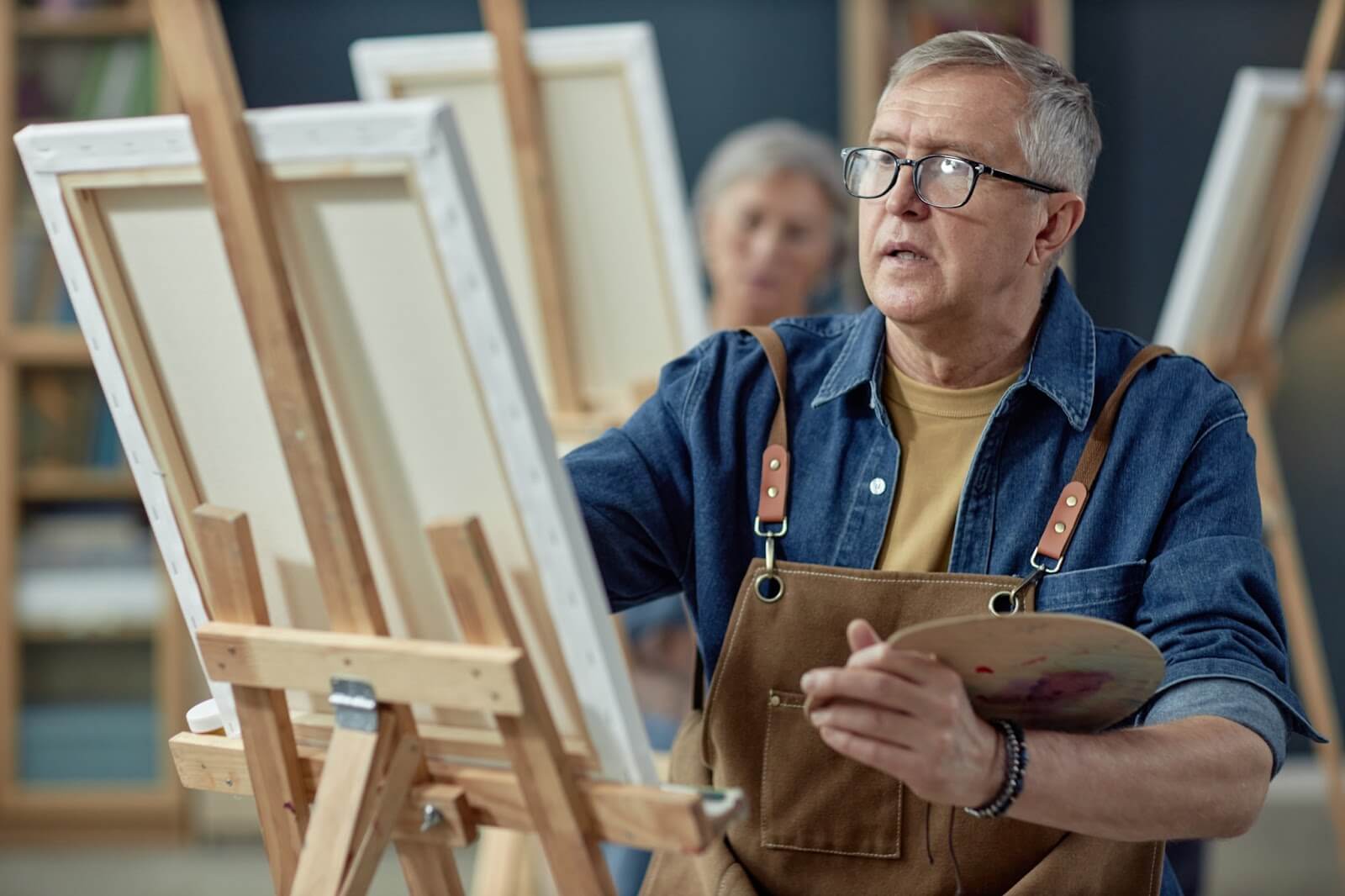Art has long been recognized as a powerful tool for self-expression, communication, and healing. For individuals living with dementia, engaging in artistic activities can provide numerous benefits, fostering emotional well-being, enhancing cognitive function, and improving overall quality of life.
One such transformative program is ‘Memories in the Making,’ an innovative art therapy program developed by the Alzheimer’s Association, designed to provide individuals with dementia a creative outlet for self-expression.
At Juniper Village at Preston Hollow, we have integrated this program into our daily activities, recognizing its profound ability to enhance emotional well-being and cognitive function.
Understanding Dementia & Its Challenges
Dementia is a broad term used to describe a range of neurological conditions that affect memory, thinking, behavior, and the ability to perform everyday activities. Alzheimer’s disease is the most common form of dementia, but there are several other types, including vascular dementia, Lewy body dementia, and frontotemporal dementia.
Living with dementia presents many challenges, not only for the individuals affected but also for their caregivers and loved ones. As cognitive abilities decline, communication becomes increasingly difficult, leading to frustration, isolation, and emotional distress. This is where programs like Memories in the Making come into play.
What Is ‘Memories in the Making’?
Memories in the Making is an innovative art program developed by the Alzheimer’s Association. It provides individuals with dementia the opportunity to express themselves through artistic creation, focusing on the process rather than the final product. The program was founded on the belief that while memory may fade, creativity and the capacity for emotional expression remain.
Participants in the Memories in the Making program engage in various art projects, such as painting, drawing, and collage-making, guided by trained facilitators who understand the unique needs of those with dementia. The artwork created often serves as a window into the individual’s inner world, providing insight into their thoughts, feelings, and memories.
Benefits of Art Therapy for Dementia
Engaging in art therapy through programs like Memories in the Making offers a multitude of benefits for individuals with dementia, such as:
Emotional Expression & Connection
Art provides a non-verbal means of communication, allowing individuals to express emotions they may struggle to articulate. This can help reduce feelings of frustration and improve emotional well-being. Additionally, sharing artwork with caregivers and loved ones fosters a sense of connection and understanding.
Cognitive Stimulation
Creating art stimulates various cognitive functions, including attention, concentration, and problem-solving. Engaging in artistic activities can help maintain cognitive abilities and slow the progression of dementia symptoms.
Sense of Accomplishment
Completing an art project provides a sense of achievement and boosts self-esteem. For individuals with dementia, this can be incredibly empowering, enhancing their overall quality of life.
Stress Reduction
The act of creating art can have a calming effect, reducing anxiety and promoting relaxation. This is particularly important for individuals with dementia, who may experience heightened levels of stress and agitation.
Preservation of Identity
Art allows individuals to express their unique personalities and maintain a sense of identity. Through their creations, they can share stories and memories, preserving their legacy for future generations.

Implementing Memories in the Making in Dementia Care
To successfully implement the Memories in the Making program, it is essential to create a supportive and nurturing environment. Here are some key considerations:
- Trained Facilitators: Make sure that facilitators are trained in both art techniques and dementia care. They should be patient, empathetic, and skilled in encouraging participation without imposing judgment or pressure.
- Adapted Materials: Provide a variety of art materials that are easy to use and suitable for different skill levels. Adaptations may include larger paintbrushes, pre-drawn outlines, and non-toxic supplies.
- Safe and Comfortable Space: Create a physical space that is safe, comfortable, and conducive to creativity. Adequate lighting, spacious tables, and a calm atmosphere are essential.
- Personalized Approach: Tailor activities to the interests and abilities of each participant. Personalization enhances engagement and makes the experience more meaningful.
The Enduring Power of Creativity in Dementia Care
The Memories in the Making program exemplifies the profound impact that art can have on individuals living with dementia. By fostering emotional expression, cognitive stimulation, and a sense of accomplishment, art therapy enriches the lives of participants and provides invaluable moments of connection and joy.
As we continue to explore innovative approaches to dementia care, programs like Memories in the Making remind us of the enduring power of creativity and the human spirit.
At Juniper Village at Preston Hollow, we are committed to enhancing the lives of our residents through innovative and compassionate care. Our Memories in the Making art therapy program is just one example of how we provide meaningful and enriching experiences for those living with dementia.
If you or a loved one could benefit from our supportive environment and specialized programs, we invite you to discover more about what Juniper Village at Preston Hollow has to offer.
Schedule a tour today to see firsthand how our vibrant community nurtures creativity, connection, and well-being.







